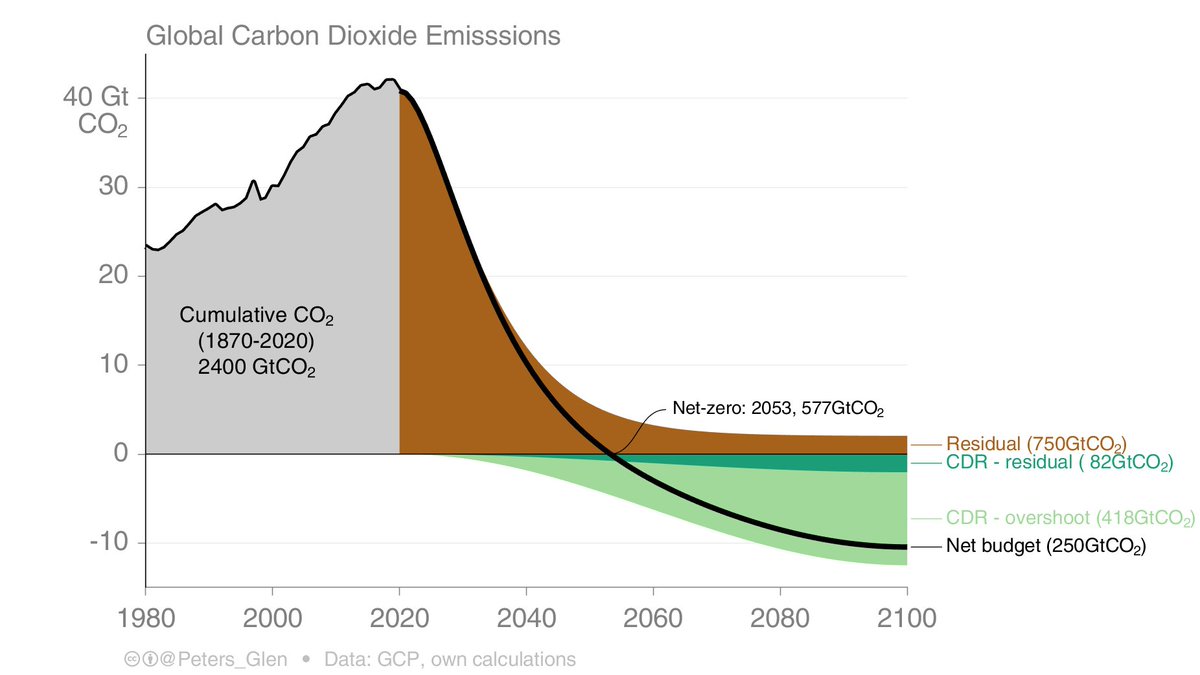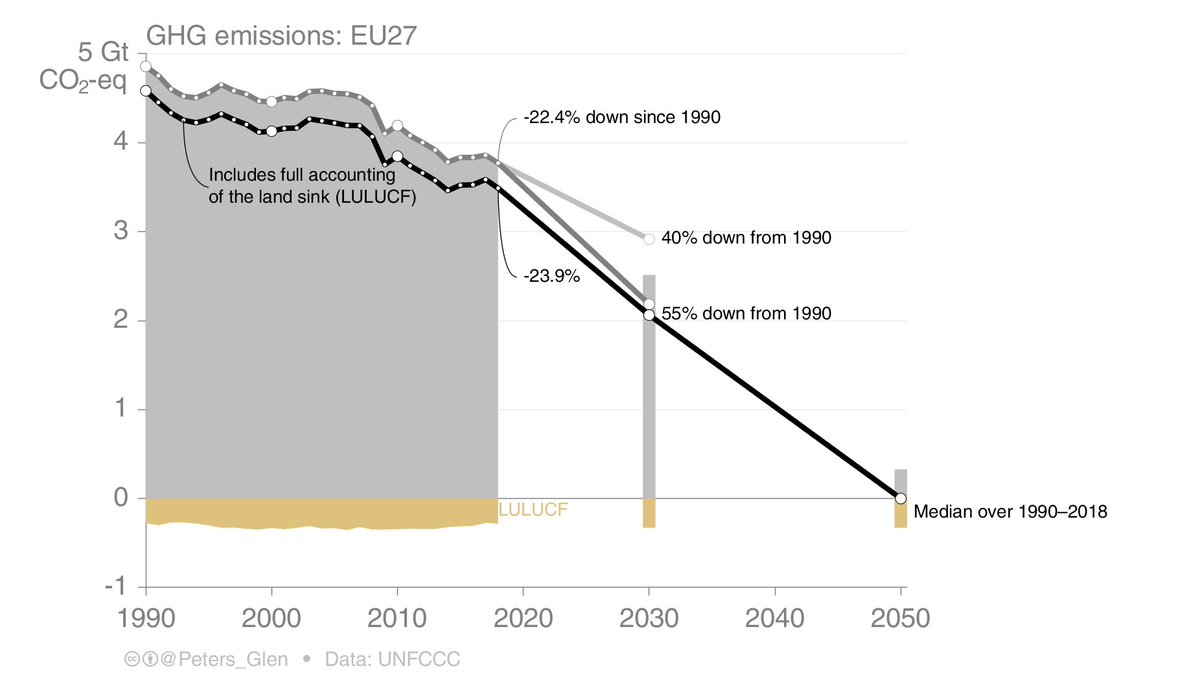No matter how much Carbon Dioxide Removal @elonmusk generates, it does not avoid the need for rapid CO₂ emission reductions (for a given temperature level).
Adding more CDR (green) just makes fossil emissions (brown) go down a little slower...
1/
https://www.cicero.oslo.no/no/posts/klima/stylised-pathways-to-well-below-2c
Adding more CDR (green) just makes fossil emissions (brown) go down a little slower...
1/
https://www.cicero.oslo.no/no/posts/klima/stylised-pathways-to-well-below-2c
Even having a ridiculous amount of CDR at net-zero in 2050, say 5GtCO₂/yr, means that fossil & LUC CO₂ emissions need to go from today's ~40GtCO₂/yr to ~5GtCO₂/yr in 30 years.
CDR is really important, but it is no where near as important as reductions in CO₂ emissions.
2/
CDR is really important, but it is no where near as important as reductions in CO₂ emissions.
2/
A lot of CDR is to cause temperatures to peak-and-decline. If you are just happy to converge to the temperature level (here in 2100), then the demand for CDR is considerably less.
There is huge uncertainty on how much CDR is needed. Maybe we need none.
3/
There is huge uncertainty on how much CDR is needed. Maybe we need none.

3/
It is also possible to largely avoid technical CDR (BECCS, DACCS) if you are smart with the way the land sink is managed (like in the EU).
There are issues with using the land sink, there are also issues with technical CDR... Which is more risky?
4/
There are issues with using the land sink, there are also issues with technical CDR... Which is more risky?

4/
Needless to say, five years after @KevinClimate & I penned this, there is still Trouble with Negative Emissions.
Unless CO₂ emissions are falling off a cliff (going down fast), there is little point to CDR.
Mitigate. Mitigate. Mitigate. Mitigate.
https://science.sciencemag.org/content/354/6309/182
/5
Unless CO₂ emissions are falling off a cliff (going down fast), there is little point to CDR.
Mitigate. Mitigate. Mitigate. Mitigate.
https://science.sciencemag.org/content/354/6309/182
/5

 Read on Twitter
Read on Twitter




